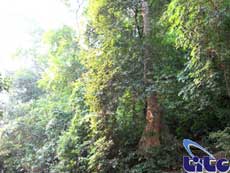Covered by 1,303,285 hectare area of natural forest and spreading over nine mountainous districts including Ky Son,Tuong Duong, Con Cuong, Thanh Chuong, Quy Hop, Quy Chau, Que Phong, Tan Ky and Anh Son, the Western Nghe An Biosphere Reserve is the only remaining area in the northern region boasting a large area of well-preserved primary forests. It is the largest Biosphere Reserve in Vietnam and South East Asia.

Here is the green corridor including 3 core zones of Pu Mat National Park, Pu Huong and Pu Hoat Nature Reserves; in which Pu Mat National Park is considered as a great museum of fauna and flora gene.
The Western Nghe An Biosphere Reserve is also home to more than 2,500 flora species and 130 mammals, 295 birds species, 54 amphibians and reptiles, 84 fish species, 39 bats species and thousands of other insects.
Thanks to its high biodiversity, the Biosphere Reserve is recognized as a typical tropical forest with plentiful habitats such as mountains, wetlands, streams...
The Reserve now accommodates ethnic minority groups: Thai, Mong, Tay Poong, Kho Mu... with many unique traditional customs and festivals.
In 2007, the Western Nghe An Biosphere Reserve was recognized by UNESCO for its natural and cultural values. On April 29th 2011, The Nghe An People’s Committee officially announced UNESCO’s recognition of Western Nghe An as a World Biosphere Reserve.
Being one of eight biosphere reserves of Viet Nam beside Can Gio Mangrove Forest, Cat Tien National Park, Cat Ba Island, Red River Delta, sea island and coastal of Kien Giang, Ca Mau, and Cu Lao Cham, the Western Nghe An Biosphere Reserve contributes not only to protection of living-environment but also to dealing with global climate change.